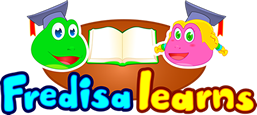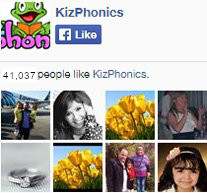Exploring Transitory Words in English: The Magic Behind Seamless Transitions
Language is a beautiful tapestry woven together by words and phrases that convey meaning, express ideas, and narrate stories. Yet, for any piece of writing or speech to flow smoothly and make logical sense, it requires bridges between thoughts and ideas. This is where transitory words, often referred to as transition words or linking words in English, play an instrumental role. Especially in the realm of children's phonics education, understanding the use and significance of these words is paramount.
What Are Transitory Words?
At their core, transitory words are like linguistic connectors. They bind sentences, paragraphs, and ideas together, ensuring there's a logical flow to what's being communicated. They're the 'glue' that holds English prose together, making sure readers or listeners can follow along without getting lost.
For instance, words like "however," "moreover," "therefore," and "then" are classic examples of words for transition. They help steer the narrative or argument in a certain direction, highlighting contrasts, additions, consequences, and sequences, respectively.
The Importance of Transitory Words in Children's Phonics Education
Building a Foundation for Advanced Reading and Writing
As children start to form sentences and later on, short paragraphs, they need to understand how ideas interlink. Transition words act as signposts, guiding them in understanding how one idea relates to another. This understanding is crucial as they advance in their reading and writing journey.
Enhancing Comprehension
A text without adequate transition can appear disjointed and hard to follow. By introducing children to transitory words early on, we equip them with the tools to comprehend texts better, recognizing the relationship between different parts of a text.
Boosting Expression and Creativity
As children become more confident in their use of linking words in English, they can craft more intricate sentences and weave together more complex stories or essays. Transitory words empower them to express causal relationships, draw contrasts, emphasize points, and list ideas in an orderly fashion.
Commonly Used Transitory Words and Their Purposes
Addition: Words like "also," "furthermore," and "moreover" are used to add more information. Example: "I love reading. Furthermore, I spend at least an hour each day with my favorite books."
Contrast: "However," "on the other hand," and "conversely" indicate a contrast or change in direction. Example: "She likes cats. However, she doesn't want to adopt one."
Cause and Effect: "Because," "therefore," "thus," and "hence" illustrate causes and effects. Example: "It was raining; therefore, we canceled the picnic."
Time and Sequence: "First," "then," "finally," and "afterwards" help order events in time. Example: "First, I will finish my homework. Then, I will play outside."
Emphasis and Conclusion: "Indeed," "above all," and "in conclusion" are used to stress importance or summarize. Example: "Above all, always be kind to one another."
Teaching Transition Words Effectively
Interactive Exercises: Make use of activities where children can fill in the blanks with suitable transition words or spot the word for transition in a given text.
Story Construction: Encourage children to create short stories, ensuring they use linking words to move the narrative forward.
Comparative Analysis: Provide children with two pieces of text – one with and one without transition words. Let them spot the differences in flow and coherence.
FAQs: Transitory Words in English
1. Can transitory words be used at the beginning, middle, or end of a sentence?
Yes, depending on the word and its purpose. For instance, "however" can start a sentence, while "because" typically comes in the middle.
2. Are transition words only used in written English?
No, they're essential in spoken English as well. They guide listeners through a conversation, making oral narratives coherent.
3. How early should children be introduced to transitory words?
While the basics of phonics focus on sounds and letters, as children start forming sentences (typically around the age of 5 or 6), introducing basic transition words can be beneficial.
4. Are there transitory words in other languages as well?
Yes, every language has its own set of linking or transition words to ensure the coherence of speech or text.
In the vast world of English language learning, transitory words might seem like a small component. Yet, they have an outsized impact on comprehension, expression, and linguistic clarity. By giving these words the attention they deserve in children's phonics education, we set our young learners on a path to articulate communication and a deeper appreciation of the intricacies of language."










